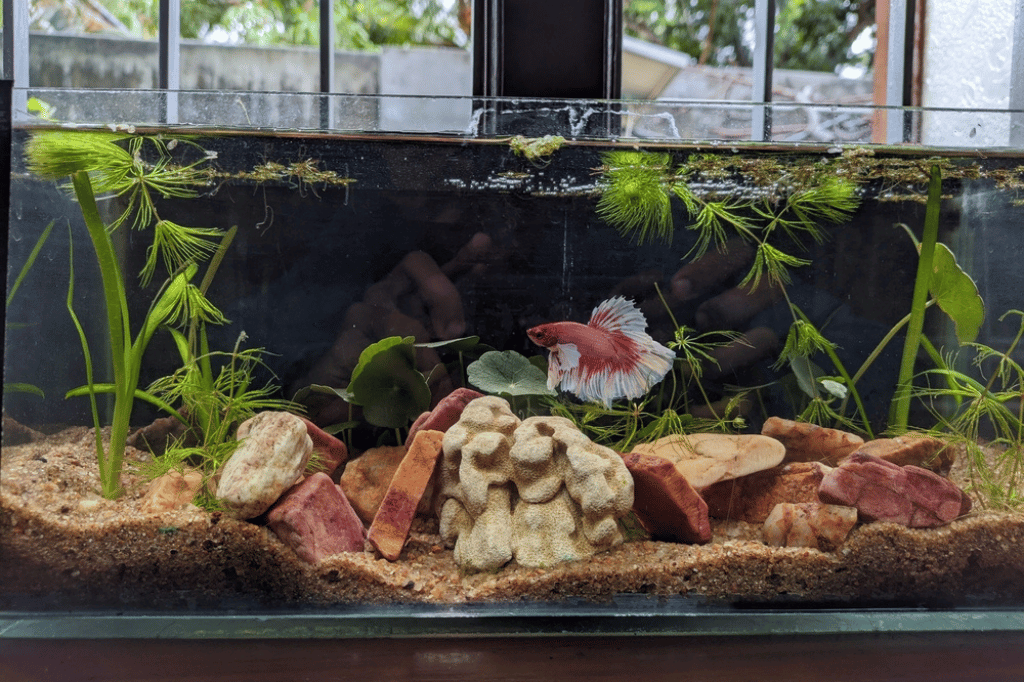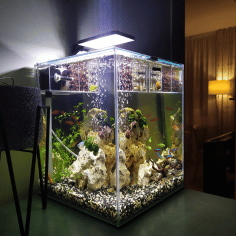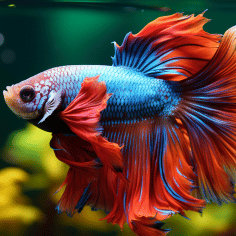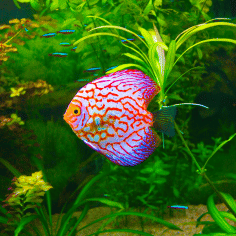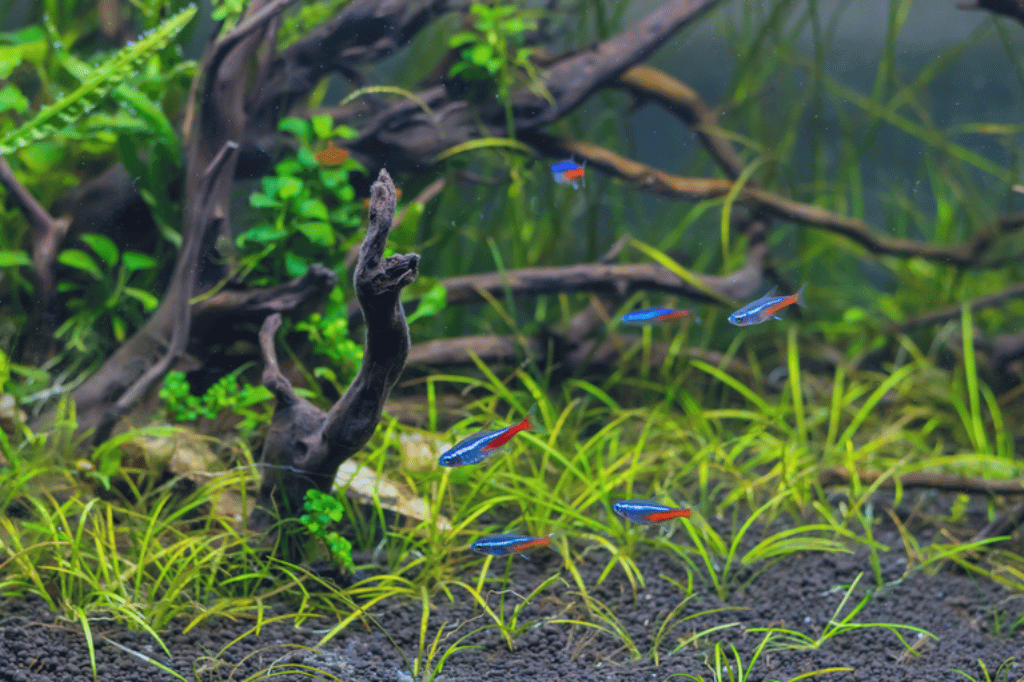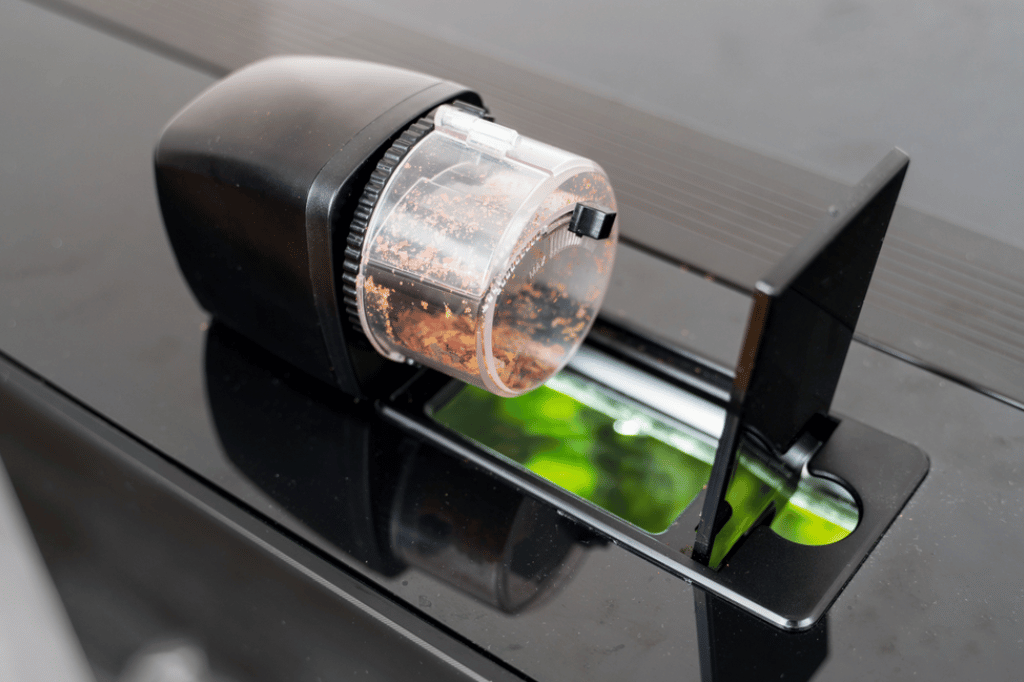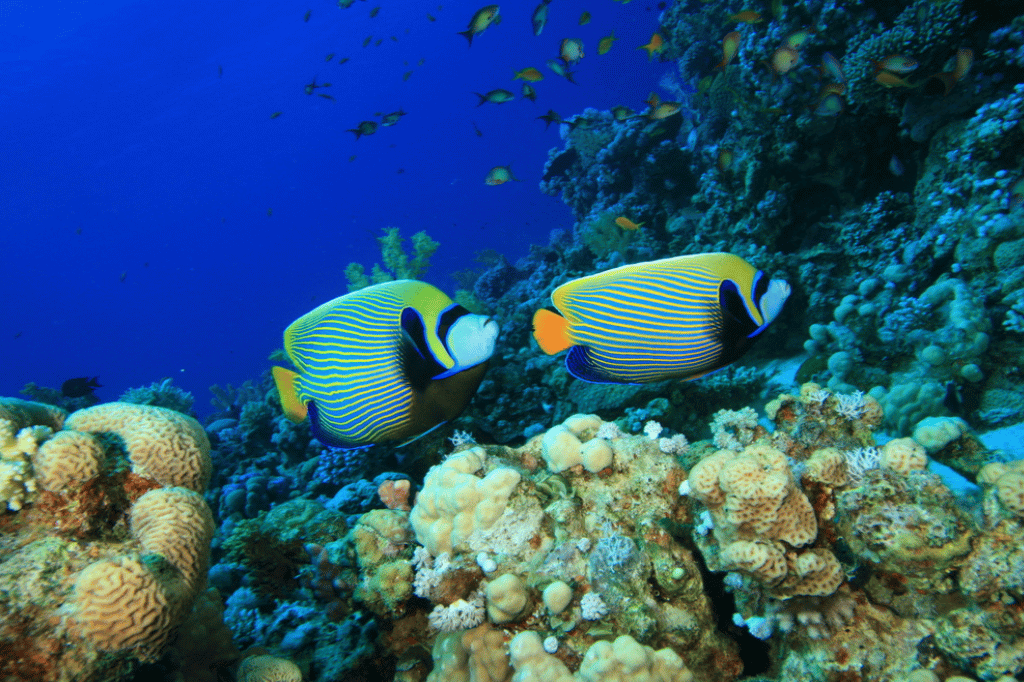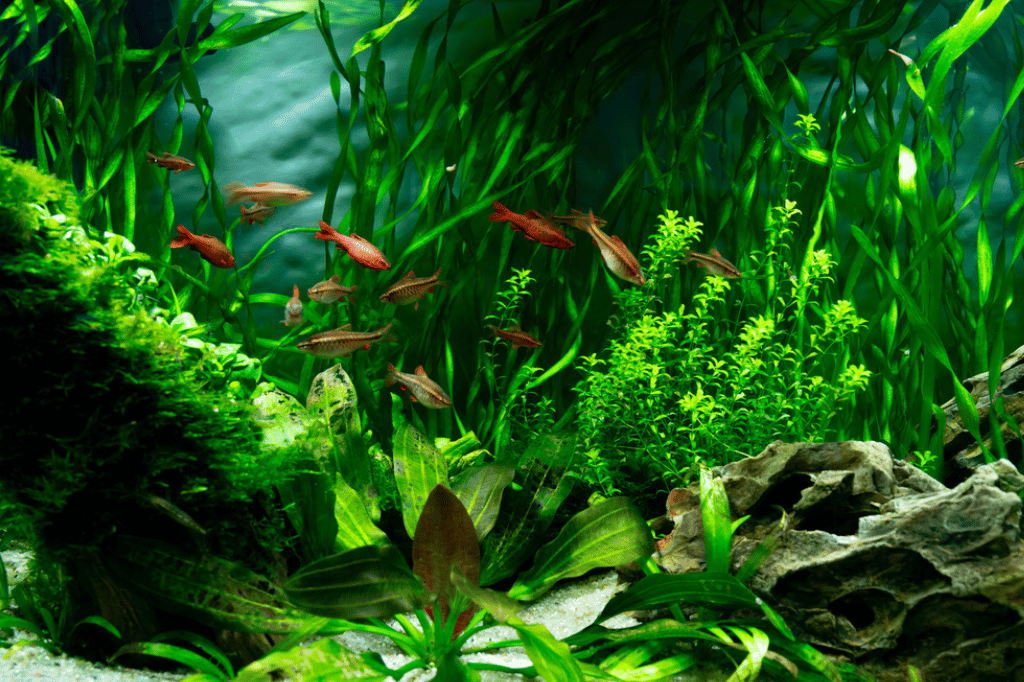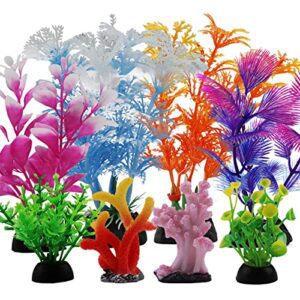Creating the perfect Betta Fish Aquarium goes beyond simply filling a tank with water and adding a fish. Bettas, also known as Siamese Fighting Fish, thrive in environments that closely mimic their natural habitats. These tropical creatures prefer warmer waters, typically between 76 and 81 degrees Fahrenheit, and do best in tanks that allow for at least 2.
5 gallons of water per fish to ensure ample swimming space. A well-rounded Betta habitat also contains plants and hiding spots to provide the necessary enrichment for these active fish, while a gentle filter keeps the water clean without creating a strong current that could stress them. By considering these elements, aquarists can create a visually appealing and healthy aquarium that caters to the unique needs of the Betta, resulting in a thriving aquatic pet that’s both beautiful and engaging to watch.

Betta Fish Aquarium: Vibrant Oasis for Colorful Companions By Insiderfish.com
Introducing The Betta Fish
The Origin And History Of Betta Fish
Betta Fish, also known as Siamese fighting fish, hail from the warm waters of Southeast Asia. Their history spans centuries, initially discovered in rice paddies and floodplains. Local inhabitants were first to notice their aggression during territorial fights, thus beginning the practice of Bettas as fighting fish. Bettas’ popularity grew due to their vibrant colors and majestic fin displays. Today, they are cherished worldwide for their beauty and individuality, far beyond their early combative uses.Characteristics And Behavior Of Betta Fish
Betta Fish possess a wide range of colors and fin types, each as unique as a fingerprint. More than just pretty faces, these creatures display intriguing behaviors. They are known for their territorial nature and will flare their gills to ward off rivals.- Sizes typically range from 2.5 to 3 inches.
- Lifespan can extend up to 3 years with proper care.
- They breathe air with a special organ called the Labyrinth organ.


Creating A Betta-friendly Habitat
Choosing The Right Aquarium Size
Size matters for Betta fish comfort. These solitary swimmers thrive in ample space. Here’s a quick guide:- Minimum size: 5 gallons
- Bigger tanks allow more stable water conditions
- Consider tank shape – longer tanks over tall ones promote better swimming space
Water Conditions And Filtration Needs
To mimic a Betta’s natural habitat, focus on two critical areas: water conditions and filtration.| Parameter | Ideal Range |
|---|---|
| Temperature | 76-81°F (24-27°C) |
| pH Level | 6.5-7.5 |
| Ammonia & Nitrite | 0 ppm |
| Nitrate | < 20 ppm |
Aquarium Aesthetics
Designing With Plants And Decorations
Imaginative design sets the stage for a Betta’s home. Use a mix of live plants and quirky decorations. Remember, Betta fish love spaces they can hide. So, decorations should offer shelter and comfort.- Live plants improve water quality and provide oxygen.
- Artificial plants should be silk, not plastic, to protect Betta fins.
- Smooth decorations prevent injury and encourage exploration.
Lighting Requirements For Betta Fish
Betta fish need adequate lighting to thrive. Bright light during the day and darkness at night mimic their natural habits.| Light Type | Benefits for Betta |
|---|---|
| LED lights | Energy-efficient and mimic daylight. |
| Blue lights | Create a calming effect for nighttime. |
The Science Of Water Parameters
Maintaining Ideal Ph And Temperature
Bettas enjoy a pH level between 6.5 and 7.5. Test the water regularly with a pH kit. Ensure the temperature stays around 76 to 82°F (24 to 28°C). Use a reliable aquarium heater and thermometer to monitor it.| Parameter | Ideal Range |
|---|---|
| pH level | 6.5 – 7.5 |
| Temperature | 76 – 82°F (24 – 28°C) |
Cycling The Aquarium For Bettas
Cycling involves establishing beneficial bacteria in your betta fish aquarium. These bacteria break down fish waste, making water safe for bettas.- Start by setting up your aquarium without the fish inside.
- Add ammonia sources like fish food to kickstart bacteria growth.
- Monitor ammonia, nitrite, and nitrate levels with test kits.
- When ammonia and nitrites are zero and nitrates are under 20 ppm, it’s safe to introduce your betta.
- Good bacteria are important.
- Never skip tests.
- Change 20-25% of water weekly.
Diet And Nutrition For Bettas
Feeding Routines And Food Types
Consistent feeding schedules keep Bettas happy and healthy. Stick to feeding them once or twice a day. Overfeeding can lead to health issues, so be cautious. Only give what they can consume in two minutes. Here’s a quick rundown of appropriate Betta food types:- Pellets: Specially formulated for Bettas, they float and are easy to dose.
- Freeze-dried foods: Bloodworms and brine shrimp offer variety and are a great treat.
- Frozen foods: Another source of protein; ensure they are thawed before feeding.
- Live foods: Mimic natural prey and encourage instinctive hunting behavior.
Understanding Nutritional Needs
Bettas need protein-rich diets — they lean on insects and larvae in the wild. Vitamins and minerals also play a key role in maintaining their health. Essential fatty acids are necessary for energy and growth.| Nutrient | Importance | Food Source |
|---|---|---|
| Protein | Builds muscle; keeps fins and scales healthy. | Pellets, live food. |
| Fatty Acids | Supports cell structure; provides energy. | Pellets with fish or krill oil. |
| Vitamins/Minerals | Ensures proper bodily functions; boosts immunity. | Fortified food, vegetables. |
Tank Mates For Betta Fish
Compatible Species
Several fish can live peacefully with Bettas. Consider these species:- Corydoras Catfish: They are bottom dwellers, avoiding the Betta’s space.
- Harlequin Rasboras: Schooling fish that add energy without aggravating your Betta.
- Kuhli Loaches: Peace-loving and shy, they keep to themselves.
- Ember Tetras: Small and non-aggressive, they are ideal tank mates.
- African Dwarf Frogs: Enjoy a different part of the tank, living peacefully with Bettas.
Setting Boundaries In Community Tanks
Create a safe space for all by:- Providing ample hiding spots with plants and decorations.
- Ensuring a spacious tank so all fish can have their territory.
- Maintaining proper water parameters and cleanliness to reduce stress.
Health And Well-being
Recognizing Common Betta Fish Diseases
Betta fish can get sick. It’s vital to spot these signs early:- Fin Rot: Fins look torn or frayed.
- Ick: White spots like sugar grains on the body.
- Swim Bladder Disorder: Trouble swimming; floating oddly.
- Pop Eye: Eyes bulge out more than usual.
Stress Prevention And Management
Happy fish live longer. Stress can make bettas sick. Here’s how to keep peace in their tank:| Prevention Method | How It Helps |
|---|---|
| Proper Aquarium Size | More space means more freedom. |
| Stable Water Conditions | Clean, right temperature, and pH levels keep them stress-free. |
| Hiding Spots | Places to hide make them feel safe. |
| Regular Feeding Schedule | They know when to expect food. |
Betta Fish Breeding Insights
The Breeding Process Unveiled
Breeding Betta Fish starts with selecting a healthy pair. A spacious tank with warm, clean water sets the stage for romance. Males impress females with an intricate bubble nest. Once the female accepts, she releases eggs during the mating dance. The male then fertilizes these eggs and places them in the bubble nest. Post-breeding care is crucial. Remove the female immediately to prevent stress and aggression.- Select a vibrant, healthy pair
- Prepare a breeding tank with optimal conditions
- Watch the male build a bubble nest for the eggs
- Observe the unique mating ritual
- Care for the eggs post-fertilization
- Ensure a safe environment for the female after breeding
Caring For Betta Fry
Betta Fry Care is meticulous but rewarding. Once the eggs hatch, it’s a race against time. Infusoria or liquid fry food become the first menu items. As they grow, brine shrimp or microworms can be introduced. Cleanliness is mandatory. Frequent water changes prevent disease and keep fry thriving. Monitoring water temperature ensures a steady growth rate.| Stage | Food Source | Water Change |
|---|---|---|
| Initial Days | Infusoria, liquid fry food | Daily, 10-20% |
| Growth Phase | Brine shrimp, microworms | Every other day, 20-25% |


Frequently Asked Questions For Betta Fish Aquarium
What Size Tank Is Needed For A Betta Fish?
A betta fish requires a minimum tank size of 5 gallons to ensure adequate space for swimming and proper water quality maintenance.
Are Betta Fish Easy To Take Care Of?
Betta fish are relatively easy to care for, requiring minimal space and basic maintenance. They need clean, warm water and regular feeding. Proper tank setup and routine monitoring ensure a healthy environment for these vibrant creatures.
What Do Betta Fish Prefer In Their Tank?
Betta fish prefer warm water (76-81°F), low flow filtration, hiding places, and soft, silk or live plants. A spacious tank with at least 5 gallons promotes health.
What Fish Can Live With A Betta?
Several peaceful fish can coexist with bettas, such as neon tetras, harlequin rasboras, and ember tetras. Corydoras and snails also make suitable tank mates. Always ensure ample space and hiding spots to prevent territorial disputes.
Conclusion
Embracing the tranquil beauty of betta fish aquariums brings a slice of aquatic serenity into your home. Providing the right environment ensures your betta thrives, offering you endless tranquil moments. Dive into a world of vibrant colors and effortless grace with your very own betta aquarium.
Start this rewarding journey today and witness nature’s marvel in every bubble and fin flutter.

